Twenty-twenty-one marks Wavelength’s 40th year in print. To celebrate the occasion, we’re diving deep into the Wavelength archive to bring you a series of short stories featuring key cultural moments, entertaining asides and colourful characters from around the British surf scene and beyond over the last four decades. Read part I here. Read part II here.
The series is presented by Oakley, who share our deep surfing heritage, having been equipping the world’s best with high-performance eyewear since ‘84.
Read more about the brand’s journey from niche cycling gear to beach cultural icon here.
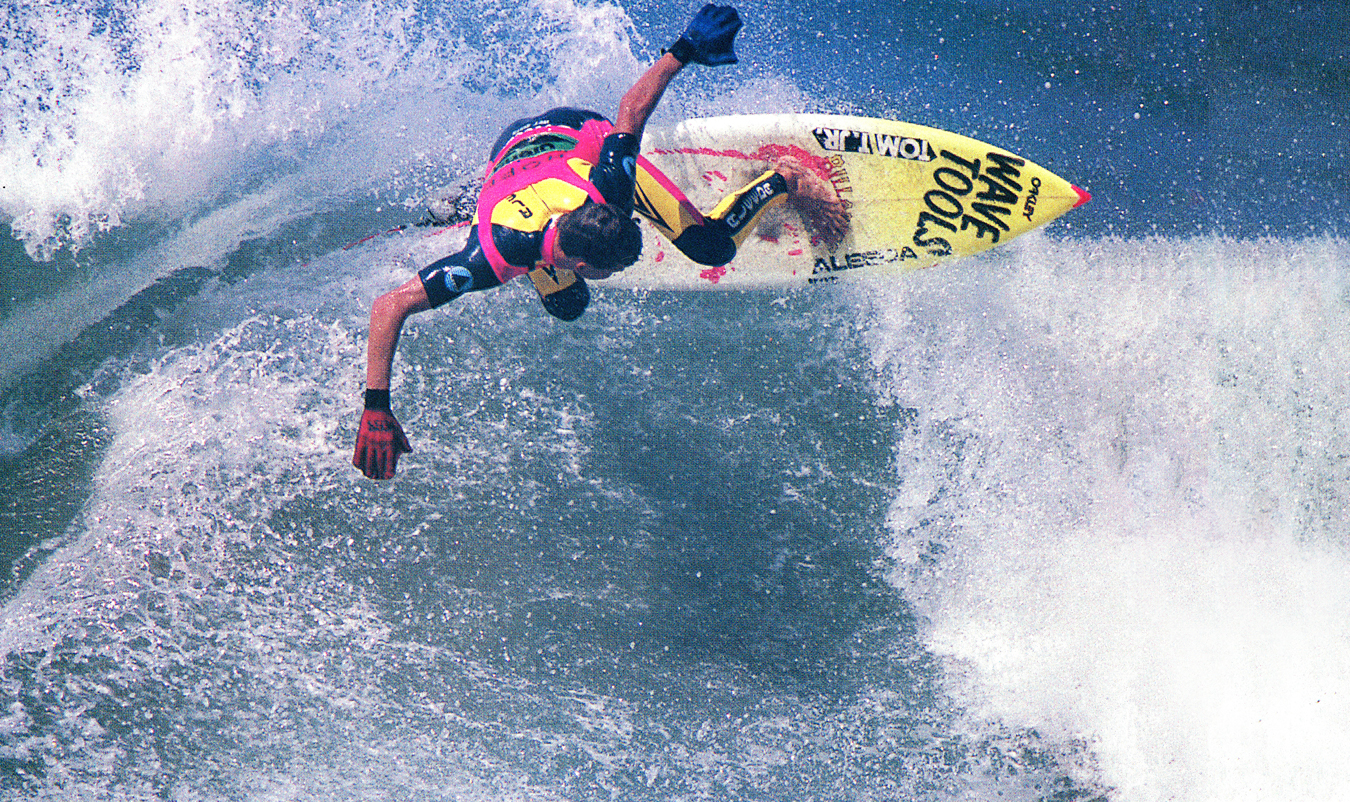
Photo: Richie Collins, with a signature float, resplendent in the gaudy fashion of the day. Photo: John Conway // Wavelength Archive
There was a minute in the mid-80s when floaters were considered the pinnacle of radical surfing. Before tail slides, alley-oops or even the much-maligned air reverse, a well-placed glide on a cascading lip was the best route to the excellent range.
The man considered king of the manoeuvre was eccentric Newport Beach native Richie Collins. In almost every way the antithesis of the laid back soul surfer of yore, he aspired not to smooth style or flowing carves, but rather a rapidly executed, high-risk onslaught, designed to eek every inch of scoring potential out of waves big or small. His demeanour too mirrored his approach to oncoming sections. He was brash, confident and confrontational, usually clad in luminous neon and paddle gloves with a home-shaved mohawk, fringed by a pair of Oakley blades completing the look on land. His boards (which he shaped himself, making him the only top-rated surfer of his generation to do so) were similarly decorated with a signature splatter of luminous paint.
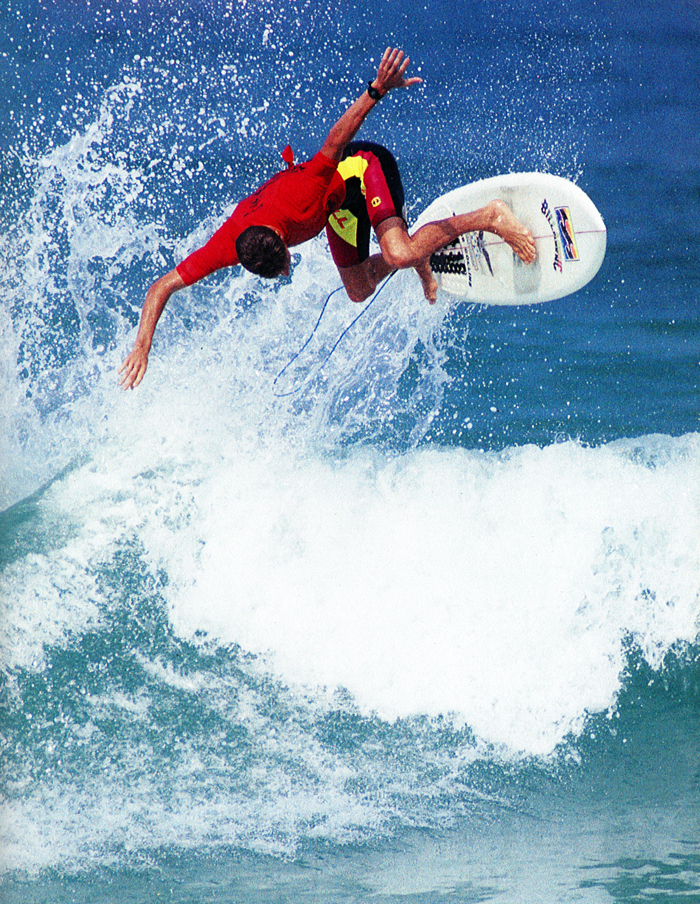
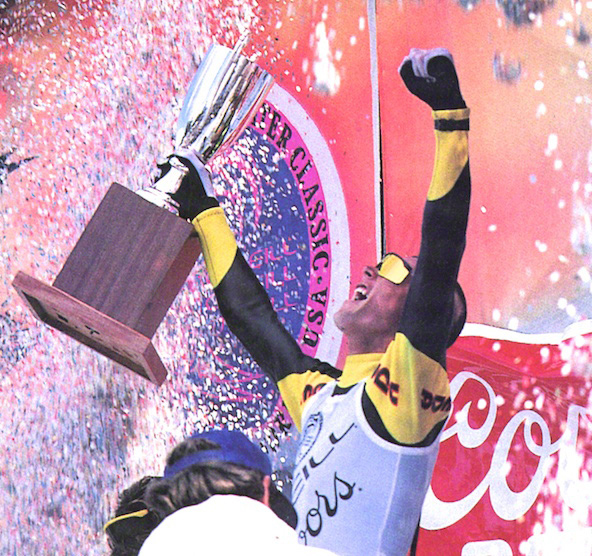
(1) Collins belonged to the original cohort who brought above the lip surfing to competition in the ’80s. Photo: John Conway // Wavelength Archive. (2) Raising the trophy at the ’89 Coldwater Classic in Santa Cruz. Photo: Rob Gilley
Despite his appearance as the ‘80s pro archetype, Richie was actually a man of many colourful contractions, equally noted for his penchant for fast cars and fighting as he was for being a devout born-again Christian. According to various profiles he was fiercely anti-drugs, with no interest in the era’s famously loose nightlife, once even espousing the benefits of masturbation when working to maintain celibacy in an interview with Matt Warshaw for Surfer Magazine.
After a decade of competing, he signed off with a bang in ‘92 when he was rushed to hospital partway through the final of the Ripcurl Pro Bells Beach with a back injury following a mid-wave altercation with a rock earlier in the event. He still managed to win the contest and nowadays, the rock is named after him. His true legacy though is not that lump of reef, but rather the competitive success he achieved breaking free of the mould laid out by the generation prior. Because while his surfing may not have been era-defining in the way Curren or Carroll’s was, he and his cohort’s approach provided a vital stepping stone for the evolution of the sport, refining the manoeuvres that would later be transformed by the ‘90s new school into the high-performance surfing we know today.
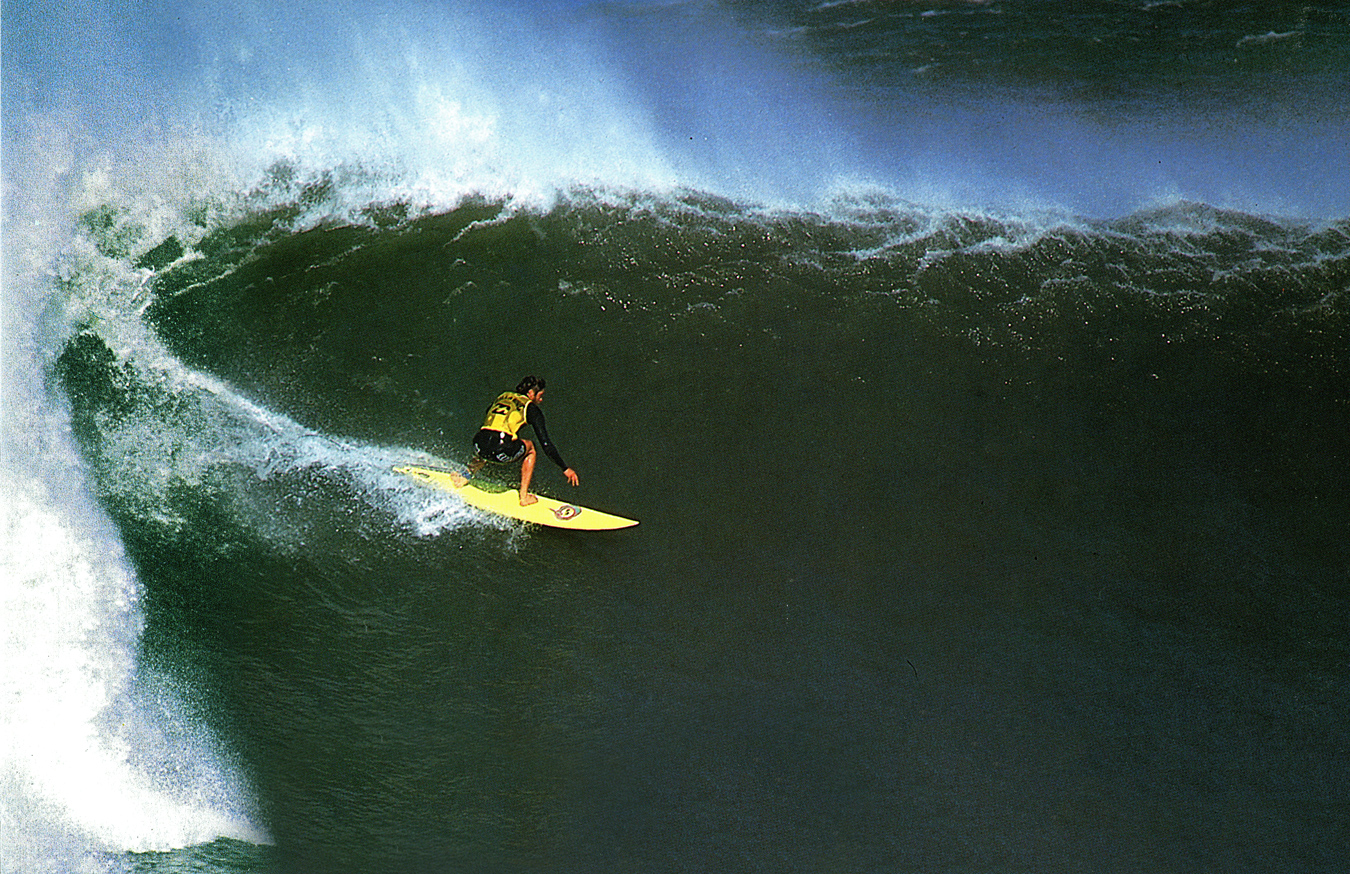
Wayne Lynch during the legendary Billabong Pro swell of ’89 at Mundaka. Photo: Jakue Andikoetxea from issue 26.
In 1989 the waves were so good for the Mundaka leg of the European Pro/ Am tour that France-based ex-pats Tom Curren, Maurice Cole and Gary ‘Kong’ Elkerton, along with fellow icon Wayne Lynch, (who was in town shaping boards with Quiksilver Europe boss Jeff Hakman) all rushed down to join the fray. Despite turning his back on competition several decades earlier, Lynch pulled on a jersey and ended up scoring the most enduring image from the event – crouched high in the pocket of a feathering 10 footer on a banana-yellow gun, shaped for him by Hawaiian Pat Rawson.
While the swell went down in Euro surfing legend, few know about the profound impact Lynch’s involvement that day had on the evolution of surfing at another of the continent’s best barrelling lefts.
In the late ‘80s, Jeff Hakman had begun sneaking away for regular surf trips to the still largely unknown Canary Islands with friend and fellow Quiksilver employee David Weaver. There, they befriended a man named Sergio ‘El Halcon’ (the falcon) – one of the Islands’ original waterman and surfing pioneers. We penned an in-depth profile on El Halcon in Volume 259 and can say with some certainty that he lived one of Europe’s most storied surfing lives; from doing hard time in a Moroccan prison in the ‘70s to living in a cave and pioneering the formidable El Quemao alone in the late ‘80s.
After several Macaronesian adventures with Sergio, Hakman invited him to his home in southwest France. On the final day of the trip, a huge swell lit up a local big wave spot, but Sergio didn’t have a board with him fit to take it on. So, Hakman offered him that big yellow Pat Rawson gun, ridden and then left at his house by Wayne Lynch after the Mundaka event the winter prior. After observing the session, Hakman insisted Sergio take the board home with him to Lanzarote.
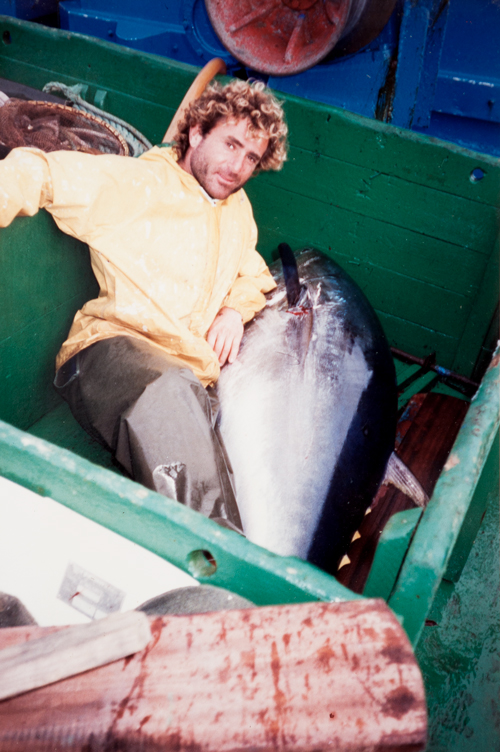
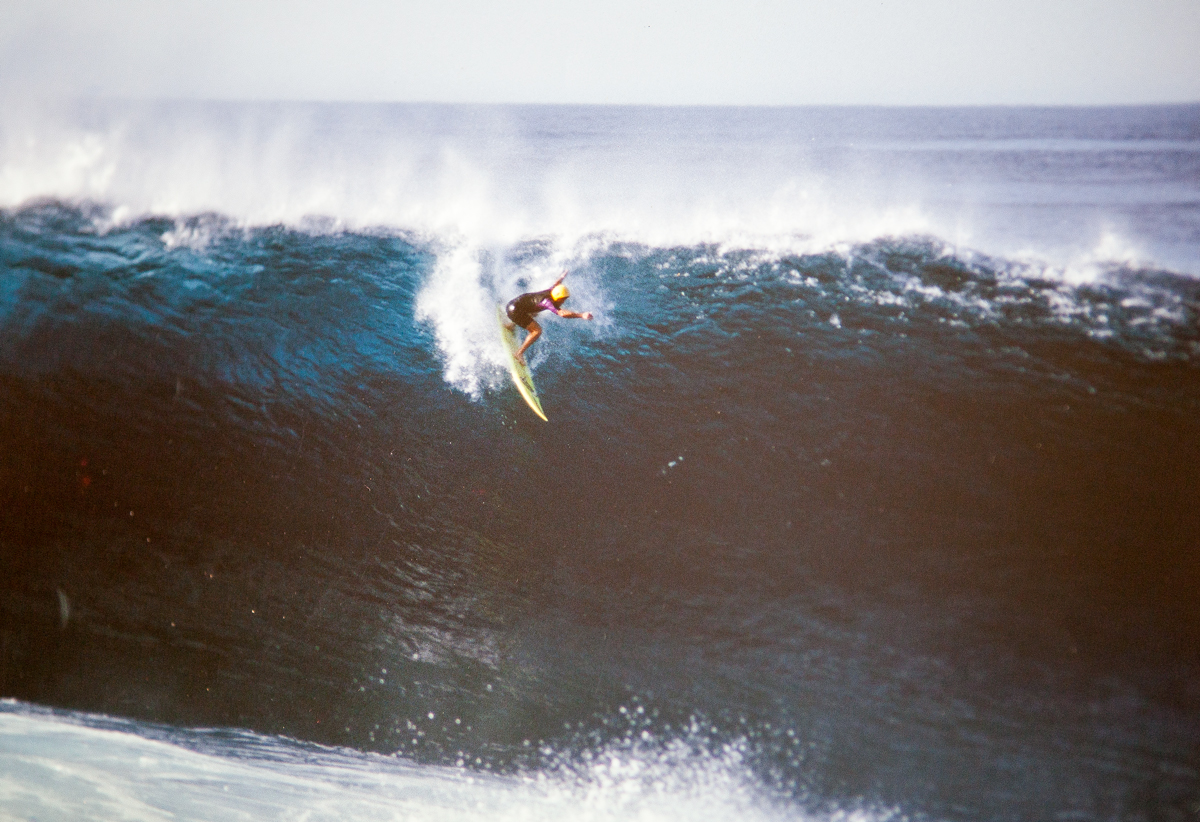
(1) Young Sergio posing with the spoils of a successful fishing trip. (2) El Halcon taking a huge vertical drop on Lynch’s yellow gun in ’92. Photo: Javier García Estrada from Vol 259.
“He knew how much it would help me at Quemao” says Sergio, voice still ringing with excitement three decades on, “And from the first day I rode it out there, I knew it was a magic board.” Prior to that, he’d been tackling the local slabs on various old hand-me-downs or backyard shapes. Getting his hands on that – a cutting edge craft from the global epicentre of big wave surfing – well, it changed everything. Suddenly, bigger days, steeper drops and heavier tubes were all within reach. “A whole new world opened up to me,” he says.
Nowadays, everyone from Lanza standouts to Basque chargers Kepa Acero and David ‘Zuku’ Bustamante credit Sergio as a major inspiration. “He broke the limits in terms of size,” says the contemporary king of Quemao, Manuel Lezcano. “I always remember my first big days at La Santa right – to see him in the water was to enjoy his confidence and motivation.”
Overall, the story is a testament not only to El Halcon’s own tenacity and athleticism but also a perfect illustration of how a generously donated board in the right pair of hands can change the course of surfing history.
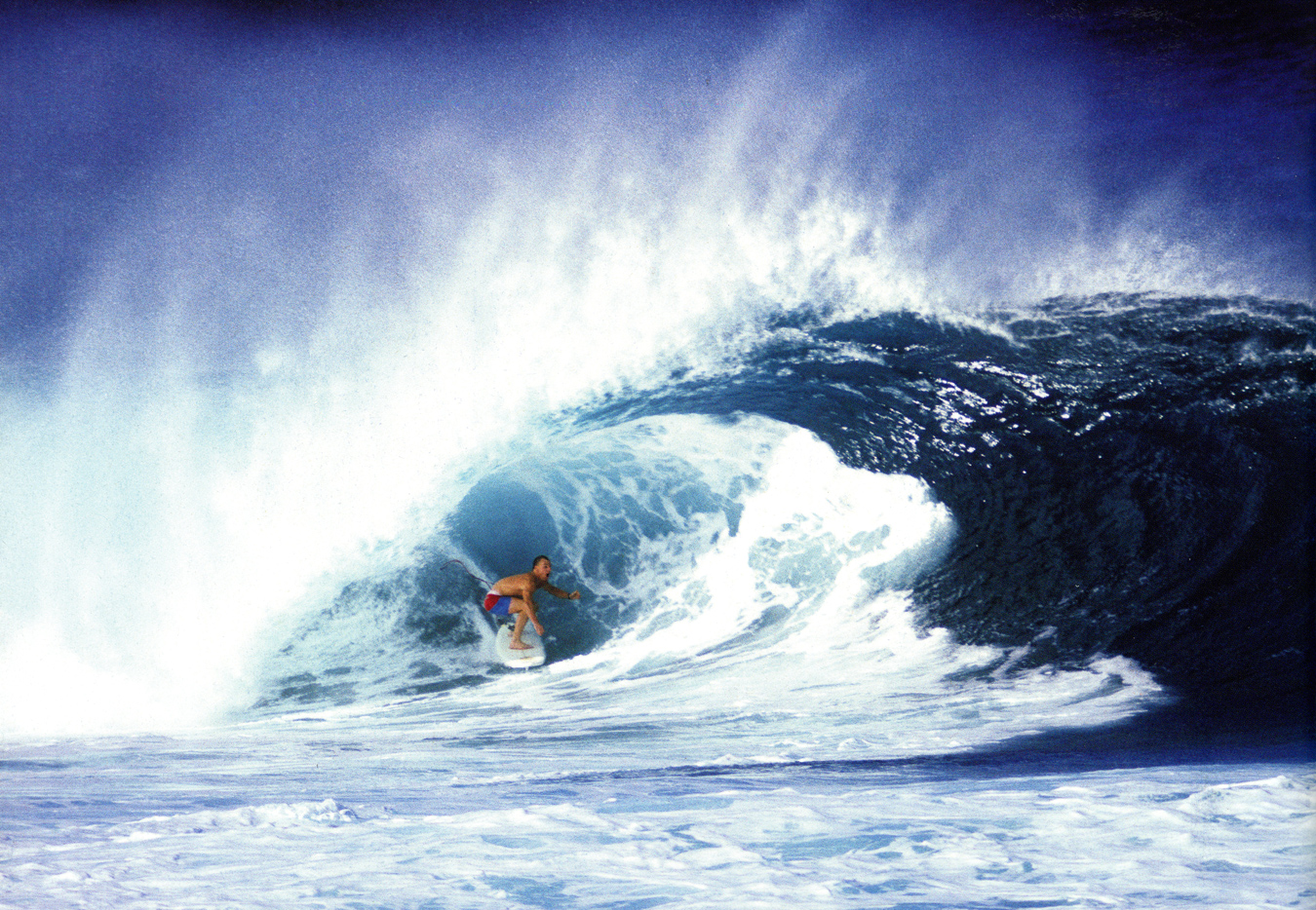
Veitch on a bomb at second reef Pipe in ’86. Photo: John Seaton Callahan from issue 205.
Nigel Veitch grew up in Newcastle in the early ‘70s, emerging as one of the city’s best skaters in his teens. At 15, one of his mates introduced him to the Sport of Kings and he spent the next few years riding the Metro out to the coast to surf obsessively in the North Sea chop. At 18, he won the English Juniors and two years after that, the English Open title. Living hundreds of miles from the focal point of British surfing, and never being selected for the British team, meant Veitch had to make his own breaks at every step of the way.
He sent three hundred letters to brands asking for sponsorship and was eventually rewarded with a small contract from Newcastle Breweries, which, paired with a healthy overdraft, allowed him to become the first Brit to embark on the ASP World Tour full time. He dropped the Nigel from his name by deed poll (because he thought just ‘Veitch’ had more impact) went vegetarian, took up meditation and set about training hard to take on the world’s best. Despite a non-stop travel schedule and a few impressive performances (including at Pipe, as seen above) Veitch returned home at the end of ‘86 with an injury and no podium finishes to speak of, leading his sponsorship to be withdrawn by his beer brewing backers.
With his pro career languishing, he applied to join the police but was told he was too short, taking up work as a nightclub bouncer instead. To the fledgling crew of North East rippers – guys like the Davies brothers and Sam Lamiroy – Veitch was an enigmatic hero. “When he came home to the beach [after being on tour],” recounted Gabe on the Looking Sideways podcast, “it was like: your god has stepped forward.” However, as is so often the case, the hero had his struggles. On the 30th April 1990, after a particularly dark period of mental anguish, Veitch walked naked to the edge of a cliff in Tynemouth and, as rescue services watched helplessly on, swan dived onto the rocks below. He was just 26 years old. Why he chose to end his life so early, no one quite knows. Some have suggested debt, relationship issues and the savage disappointment that followed his short lived-pro career as contributing factors. While we’ll never know for sure, the mark he left on the North East surf scene has never been in doubt.
“The determination with which he lived his life and how he overcame adversity from such unlikely beginnings to live his dreams is inspiration in its purest form,” reflected Gabe Davies in an article in WL issue 205. “Veitch’s legend lives on in the North Sea, showing perhaps that it’s not the time you are in this world, but the number of souls you touch that shows the true quality of a life well-lived.”
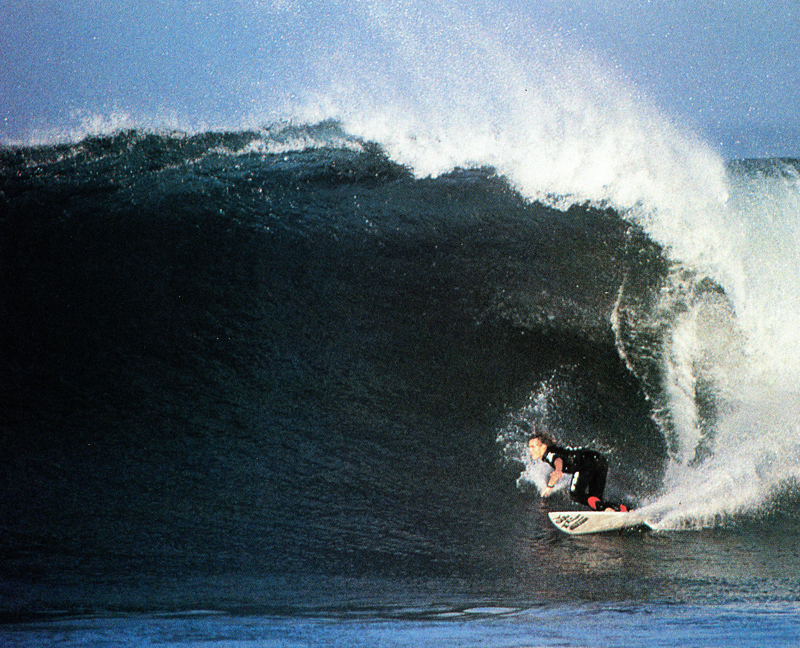
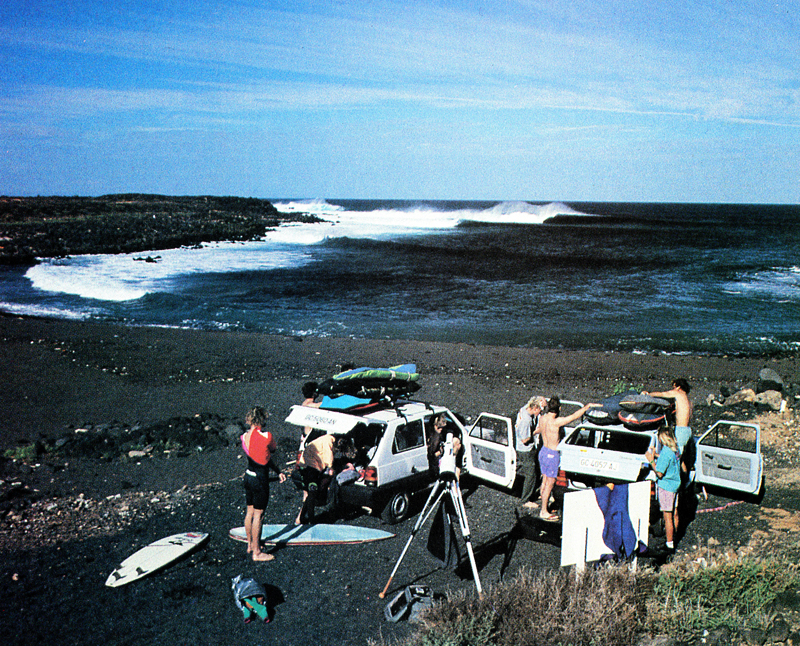
(1) Russ Winter, who turned 15 during the trip, off the bottom on a solid one at Ghost Town. (2) The crew. Photos: John Conway // Wavelength Archive
In ‘88 a crew of Brits were shipped out to Lanzarote to star in a washing powder commercial. There, they stumbled upon La Santa at 15 foot, returning home with tales of Hawaii style waves just a stone’s throw into the Atlantic.
Three years later in ‘91, John Conway rounded up Britain’s top surfers and a couple of their mates for a three-week photo trip to the island. Newquay boys Spencer Hargreaves and Grishka Roberts headed up the eleven strong crew, alongside a smattering of young guns, including Gabe Davies and Russ Winter, both just 14, and WL scribe Simon Wootton who penned the feature that appeared in issue 31.
The boys arrived late one warm December evening and got straight into the holiday spirit, waking the next day with sore heads to the news that El Quemao was 6-8 foot, offshore and empty. “Of course being the young and bullet-proof crew that we were,” recalls Spencer, “we paddled out.”
JC knew that pairing the UK’s most experienced pros with its hottest up and comers was a recipe for fireworks and Spencer recalls a strong rivalry between himself and Russell, who was surfing so well that first morning that Simon mistook the teenager for Grishka – already a one-time European champ by then – on one neatly threaded layback tube. Not wanting to be outdone, Spencer set about backdooring the peak – a strategy that ended in a nasty wipeout and underwater altercation between face and fin. When he popped up, his fringe was tinged a dark shade of red, but he wasn’t going to paddle in. As he swung and took off on the next wave, JC rattled his shutter, scoring the shot that would end up on the cover of the issue. Spencer returned from the hospital after a few hours with six stitches and, against doctors orders, was out surfing again the next day, a bright red swimming cap covering his barely healed wound.
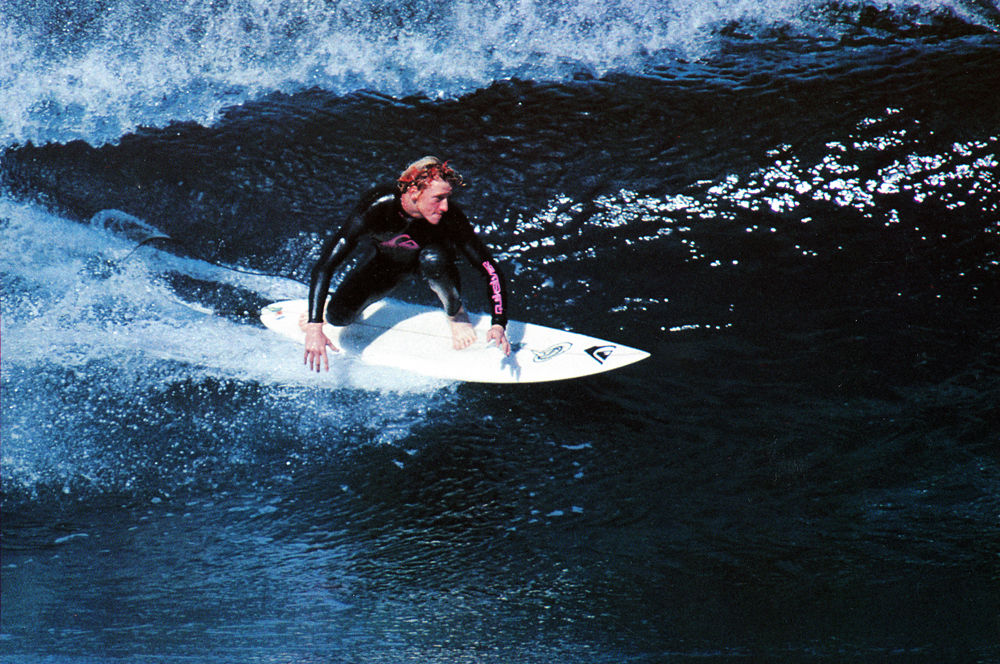
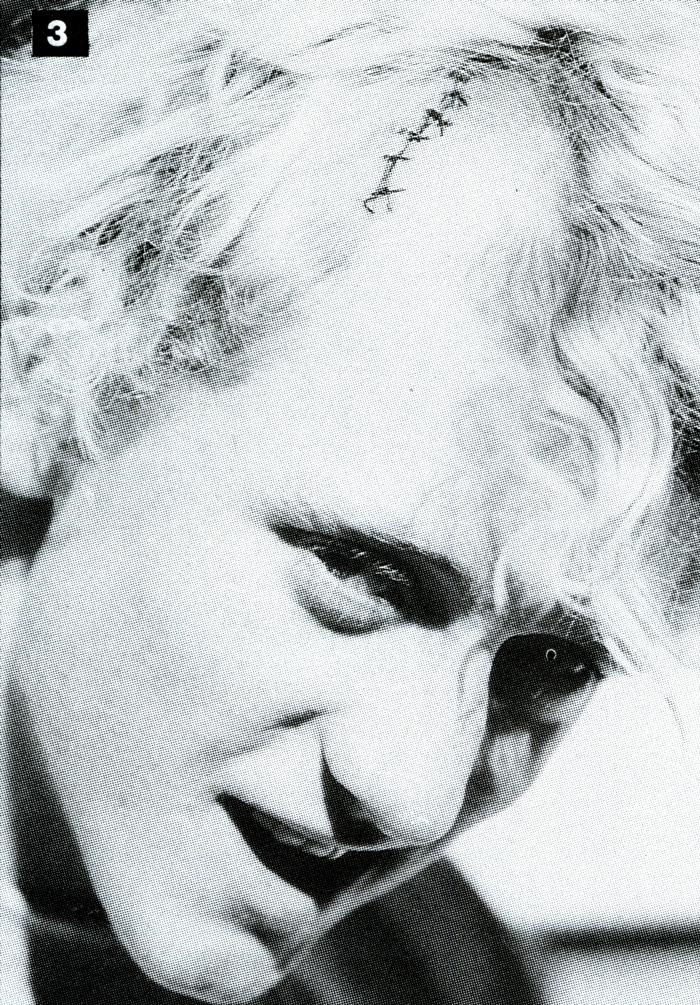
(1) Spencer’s Red Hair cover shot. (2) The stitches stayed in for most of the rest of the trip, forcing Spencer to surf in a swimming cap. Photos: John Conway // Wavelength Archive
After conditions turned against them, much of the rest of the trip – and the mag story – was dedicated to nocturnal revelry in the infamous Puerta Del Carmen. Someone got crabs, someone crashed the hire car, two of the boys got roughed up by the police for eating a burger straight from the bar and one of the crew may even have got amongst it with a Scandinavian netball team staying at La Santa sports complex, although it was a little too long ago for memories to be fully reliable.
Looking back though, it’s not these stories that make the trip noteworthy but rather how thoroughly the surfers on it would go on to dominate the British and European scene in the years that followed.
Grishka, already a one time European Champion, would win again ‘93, while Spencer would similarly claim the title twice before the decade was out. Gabe took his heavy wave skills over to the North Shore, returning to the Brish Isles to pioneer big wave surfing at Mullaghmore in the early 2000s and of course Russell shortly went on to become Britain’s most successful surfer ever when he qualified for the CT (more on that in the next instalment of Deep Cuts.)
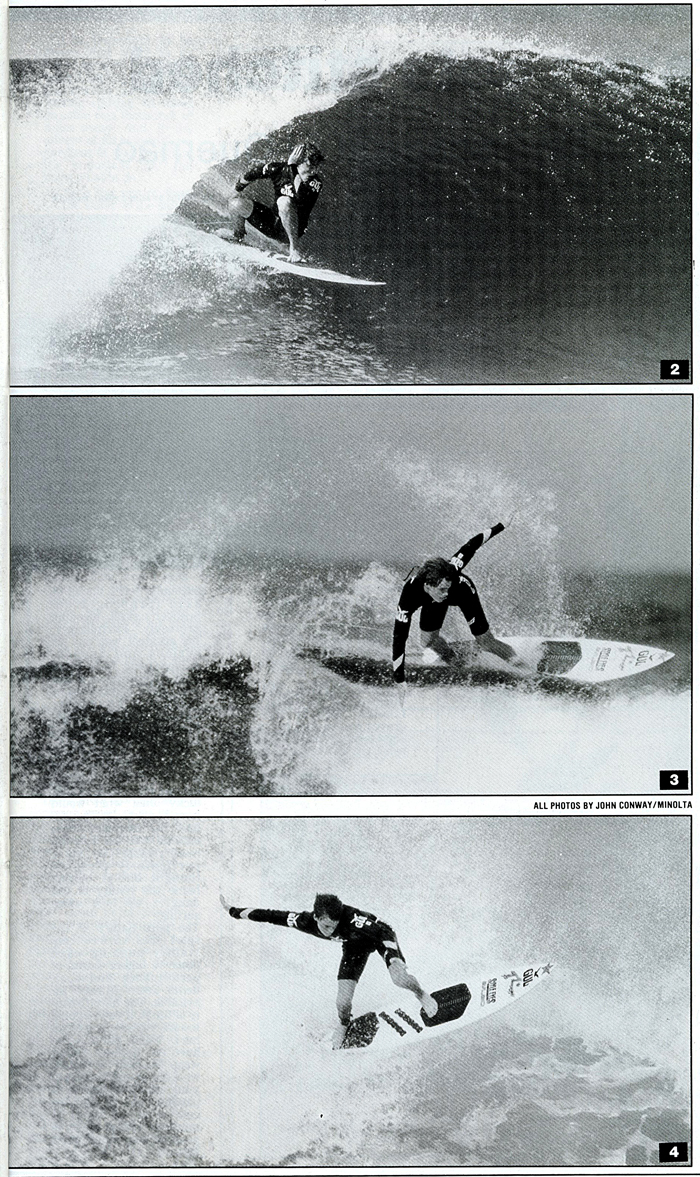
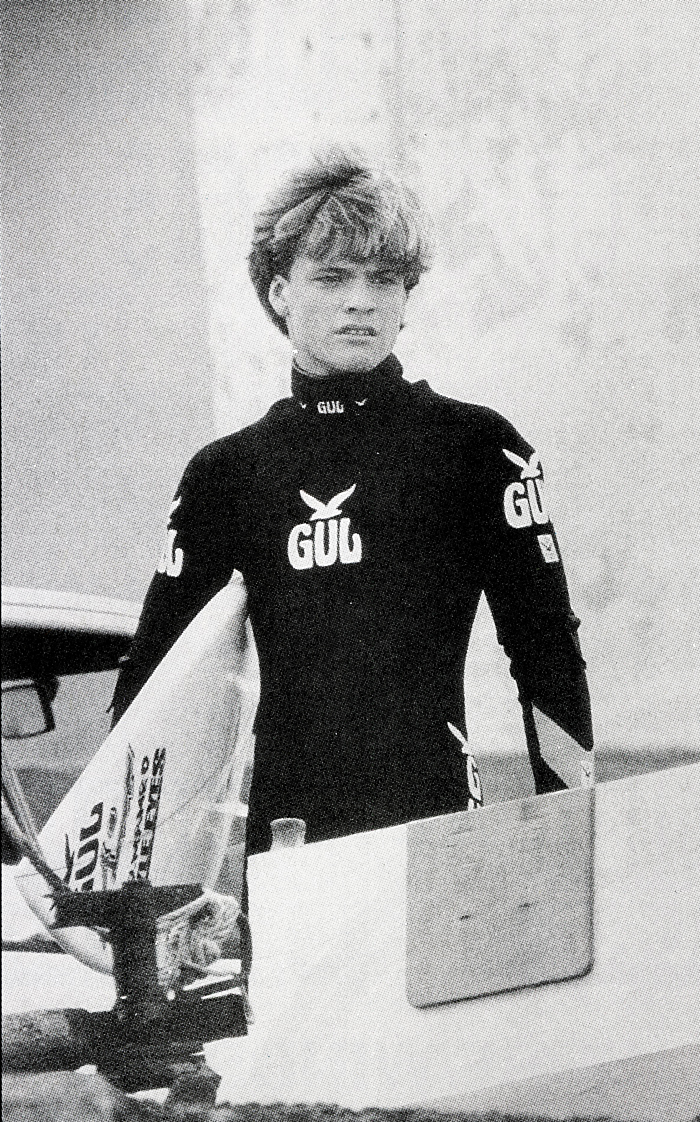
A young Russ Winter showing talent beyond his years, prompting WL scribe Simon Wooton to dub him Britain’s best chance for a future world title in issue 31. Photos: John Conway // Wavelength Archive
The story also typified a new attitude emanating from Newquay’s top tier that would be taken up with gusto by the next generation as the ‘90s progressed. Characterised by a move away from the clean-cut, polite tenacity of eras past towards an altogether more cock-sure, balls-out approach, applied equally on land and sea.
For the new guard, it was about sitting deeper and going harder – over the ledge and until the sun came up. It was about showing that the Brits were no novelty act, that they had arrived on the world stage and that any doubts in their minds as to whether they deserved to be there had long since withered away.

